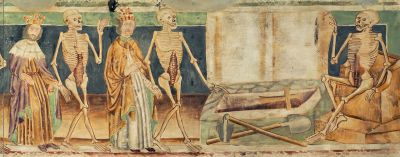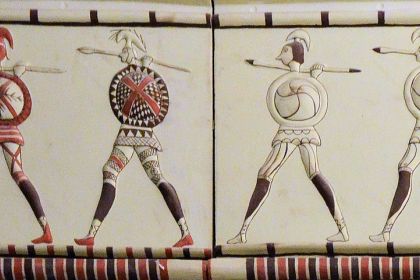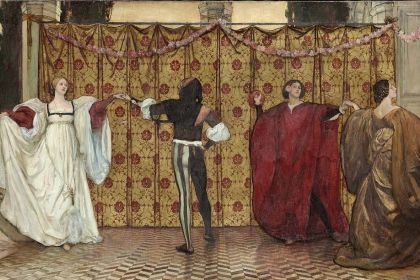Xylophone
Danse Macabre: skeletal images in Saint Saens' iconic xylophone

Dance of Death replica of 15th century fresco
The concept of the Danse Macabre (literally meaning the Dance of Death) dates back to the Medieval period when European poets and artists portrayed death as a dancing figure who led people from all walks of life to their grave. The tradition was based on the idea of the transience of human life and the equality of all people in the face of death.
The Danse Macabre genre saw a revival in the Romantic era when Franz Liszt, Camille Saint-Saëns, and Modest Mussorgsky penned their versions of the death dance.
Currently, the best-known work on this theme undoubtedly belongs to Camille Saint-Saëns whose Danse Macabre symphonic poem was inspired by Henri Cazalis' poem. Humorously titled Égalité-Fraternité or Equality-Fraternity, the poem depicted a group of skeletons dancing in a cemetery at night to the accompaniment of Death's violin melody.
To depict the dancing skeletons, Saint-Saëns used a xylophone which was an absolute novelty at the time, so the publisher had to indicate a detailed description of the instrument in the score as well as information on where to buy it. The ominous mood of violin passages, performed using a mute, can be explained by the frequent use of the diminished fifth interval known as 'diabolic'—an unambiguous epithet granted to the interval in the Middle Ages.
Listen to Camille Saint-Saëns' Danse Macabre performed by Leonard Bernstein and New York Philharmonic Orchestra:
Curiously, the now-famous work was not well received by the composer's contemporaries, which was not least due to the mocking mood introduced into the dramatic theme by the playful and airy sound of the xylophone. This is probably why Saint-Saëns included Danse Macabre motifs in his children's music suite The Carnival of the Animals, where the xylophone is intended to imitate the sounds of fossils.



